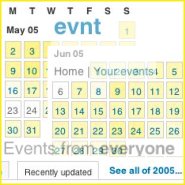

 subscribe
subscribeFact and fiction in the not so new age of terror
The bomb attacks on July 7, the attempted attacks on July 21 and the killing of an innocent Brazilian man the following day have left Britain reeling. With three suspected suicide bombers still on the run, British society stays on high alert. In this situation we need to pause to reflect. Once more the relationship between fact and fiction, between so called reality and the reality created by media is turned on its head.
 |
Harvie Branscomb, St. Louis Missouri, U.S.A. May 13 2005:
Warning: this text contains opinions and observations that can not be considered objective or factual reporting. This information may be irrelevant or in some cases, toxic. Handle with care. This is also true of almost everything else you are reading elsewhere. For a completely different perspective, visit www.mediaresearch.org |
St.Louis Missouri, USA is the gateway to the American West, home of Pulitzer and capital city of a state located in the center of the USA. Voters here chose Bush in the 2004 election. St Louis is the weekend home of the National Media Reform Conference.
By Angus Carlyle
 |
“Francesco Santoliquido’s office was deep, high, consciously impressive. In one corner stood a sound sculpture, the work of Anton Kozak: a beautiful piece, all flowing lines and delicate rhythms, emitting a gentle white hiss that swiftly infiltrated itself into one’s consciousness and became rooted there.â€. [Robert Silverberg To Live Again (London: Fontana, 1969) p. 39] << Anthony Elliot's 'Ear' |
While the world is not yet inundated by a prestigious caste of sonic sculptors akin to those that populated the pages of 60’s pulp science fiction, it is nevertheless possible to discern something of an upswing in the fortunes of those operating on the interface between sound and experimental practice. The symptoms are there for diagnosis: an increasing number of high profile exhibitions; a proliferation of prizes contentiously rewarding perceived merit; an expansion of dedicated books, journals, and web-sites animated by a commitment to mapping of the territory; a great expansion in the higher education courses dedicated to the artistic side of sound; a perhaps yet more revealing migration of debates from the confines of a self-reflexive discourse to more ‘generic’ publications; and, ultimately, in the explosion of work – both recorded and performed – that, initially at least, invite absorption within the definitional category of sound art.
Station House Opera are performing 'Live from Paradise' in an empty shop in Birmingham, a disused church in Colchester, and a former courtroom in London. Dizzied by the fluidity of their networked SFX which folded space and time, mixing the ancient media of theatre and new media space, I couldn't say if there was a story. There are relationships and scenes between 4 characters, played by 9 actors and 3 cameras at each venue, all connected and broadcast via a 2mb broadband connection.
 |
Piano duets, an attempted seduction, some good jokes and a psychological observation, all take place between players, across physical space and, in the company's own words, "merge to become a fourth imaginary space." |
It's is not an easy thing to write about.
The dialogue and performance style reminded me of some Hal Hartley shorts I saw a while back. But the scenario kept bringing me back to Jean Paul Satre's 'In Camera".
I have been to the ICA exhibition today "Touching the invisible" from Interactive institute (Sweden), I quite like their works "Brainball", and "Brainbar".
Brainbar is a mechanical bar which mixes drinks adapted to the visitors brainwaves. I got the vodka with apple juice..haha..taste bad really. I was relaxed, so got a nice drink, otherwise would get the blue toilet liquid!! Brainball is two-player game where the goal is to be considerably more relaxed than the opponent.
The exhibition also includes other work: remotehome, delay mirror, monochromeye and hell hunt. Dont forget also see work by Daniel Brown, Ben Fry when you pass the digital studio (Processing works to capture your live drawing from paper to computer via two webcams)
I think you should go there, have a look or touch, just spend "A POUND" for entrance fee with a student card.
Date: 19 May - 2 June 2005
12:00-7:30pm daily
ICA -Theater
Part-time
exhibition researcher
Perry
A conversation with Dave Green of NTK at the EVNT workshop earlier this week at SPACE Media Lab started like this....
Me : So you have this conference coming up in July. Would it be appropriate for artists to come along to talk to programmers?
Dave: [---giggles-->
[---giggles more-->
The giggling kept going throughout our conversation. Perhaps it was because I kept making statements and asking questions that generalised programmers into a herd- comments about how they think, behave, communicate. It may also be that I falsely assumed that everyone has the same question as me perpetually ringing in their heads.
- Why don't artists in London work more closely with the programming community?-
I attended a workshop loosely based around the EVNT software project but billed as bringing together producers of events and coders of event software to meet each other and “brainstorm the future of event organisation (with an emphasis on the arts), calendaring tools and technologies.â€
 |
I wouldn’t really describe myself as belonging to either of those groups but I was very glad I was along for the ride. The introduction to why we were all there generally and specifically as individuals was really interesting. It became clear that although there was a good deal of common ground among us we had such diverse motivations that distinctions like coders and producers weren’t that meaningful. |